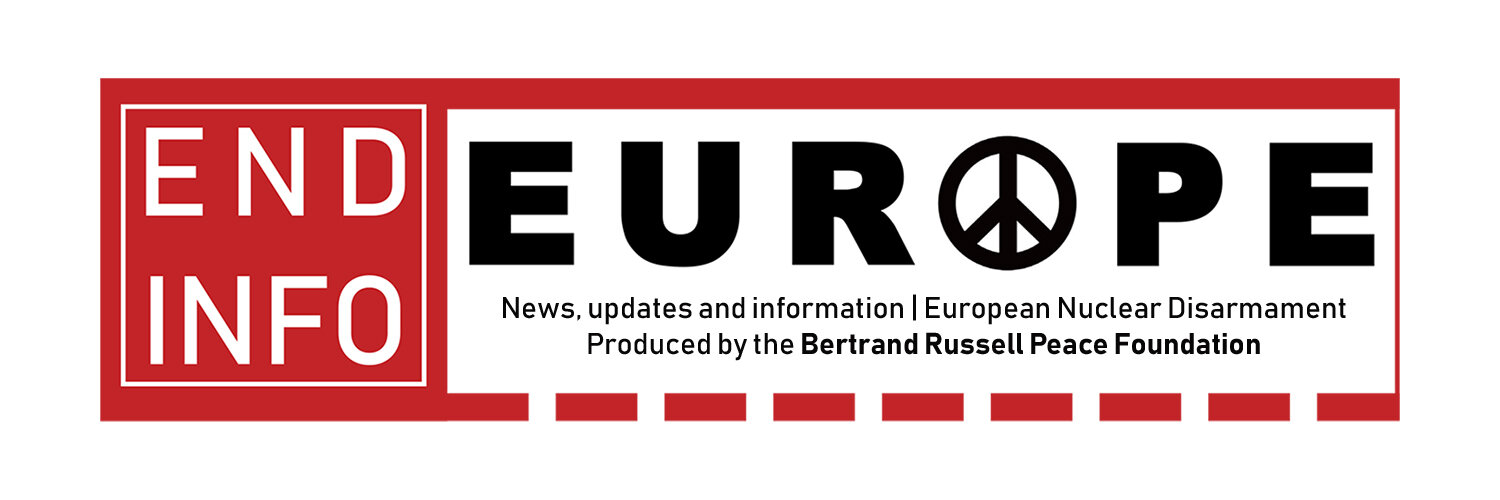Atomic Scientists: It's still 100 seconds to midnight
The Bulletin of the Atomic Scientists has maintained the ‘Doomsday Clock’ at 100 seconds to midnight.
From END Info 22 | February 2021. Download here
There had been some expectation that the removal of Donald Trump from his White House office would be sufficient to move the hands of the clock away from midnight. This was not to be. Citing multiple factors ranging from the ongoing Covid-19 pandemic to the accelerating climate catastrophe to explain their decision, the Atomic Scientists also raised the following warning about the danger of nuclear weapons:
‘Accelerating nuclear programs in multiple countries moved the world into less stable and manageable territory last year. Development of hypersonic glide vehicles, ballistic missile defenses, and weapons-delivery systems that can flexibly use conventional or nuclear warheads may raise the probability of miscalculation in times of tension. Events like the deadly assault earlier this month on the US Capitol renewed legitimate concerns about national leaders who have sole control of the use of nuclear weapons. Nuclear nations, however, have ignored or undermined practical and available diplomatic and security tools for managing nuclear risks. By our estimation, the potential for the world to stumble into nuclear war—an ever-present danger over the last 75 years—increased in 2020. An extremely dangerous global failure to address existential threats—what we called “the new abnormal” in 2019—tightened its grip in the nuclear realm in the past year, increasing the likelihood of catastrophe.’
Speedy moves by Biden’s White House to reengage with certain diplomatic and non-aggressive means to bolster nuclear security must be welcomed and may well contribute to a de-escalation of risk. However, if such instances do not develop into an overall policy of establishing greater nuclear security then an opportunity to make the world a safer place will be missed. With respect to developments in weapons technology, the Atomic Scientists warned:
‘In the past year, countries with nuclear weapons continued to spend vast sums on nuclear modernization programs, even as they allowed proven risk-reduction achievements in arms control and diplomacy to wither or die. Nuclear weapons and weapons-delivery platforms capable of carrying either nuclear or conventional warheads continued to proliferate, while destabilizing “advances” in the space and cyber realms, in hypersonic missiles, and in missile defenses continued.’
If speedy measures are not taken to halt the growing arms-race - if the hypersonic missiles, new warheads and military deployments are not reversed - then every diplomatic effort will be a sticking plaster rather than a cure.
The combination of measures is essential because of what the Atomic Scientists identify as a ‘threat multiplier’: “the continuing corruption of the information ecosphere on which democracy and public decision-making depend.” END Info and writers for The Spokesman have described the configuration of risks as being a ‘global tinderbox’, where one false move - one misunderstanding or misapprehension - could spell disaster for human life. This threat multiplier doesn’t just exist within states but between states. This is why positive moves in one respect must be met with positive moves across the board. In their ‘wake-up call’, the Atomic Scientists argue that the following steps should be taken to save humanity from existential ruin:
* The US and Russian presidents should, upon extension of New START, launch follow-on talks for more ambitious and comprehensive limits of nuclear weapons and delivery systems ...
* US President Joe Biden can show leadership by reducing US reliance on nuclear weapons via limits on their roles, missions, and platforms, and by decreasing budgets accordingly. The United States should declare its commitment to no-first-use of nuclear weapons and persuade allies and rivals to agree that no-first-use is a step toward security and stability.
These will be essential and, as importantly, achievable steps to massively reduce nuclear risks. One thing missing from this list of requests is for the nuclear armed states to constructively engage with the process now underway thanks to the ratification of the Treaty on the Prohibition of Nuclear Weapons.

